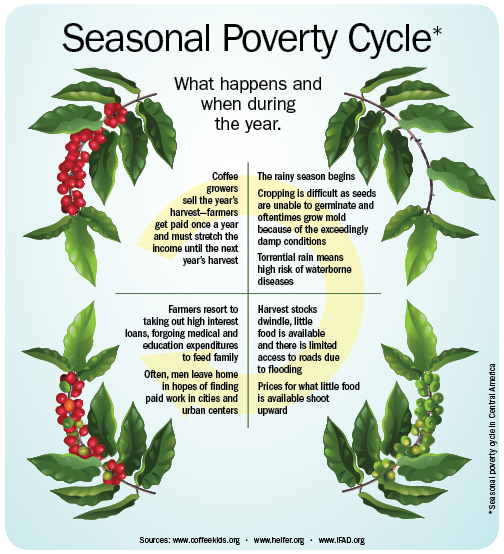Chronic hunger is a common challenge in coffee-growing communities all over the world. Coffee is the most traded agricultural commodity in the world, and the 25 million coffee farmer families in the world depend upon coffee as their sole source of income. For every pound of gourmet coffee sold, a coffee farmer may receive between $0.12 and $0.25. Once the season's harvest is sold, however, the income rarely lasts throughout the remainder of the year.
In Mexico and Central America, los meses flacos, or "the thin months" refer to the three to eight months out of every year when two-thirds of small-scale coffee farming families cannot maintain their normal diet. This phenomenon actually occurs in other coffee-growing parts of the world, taking place during the region's rainy season (and more widely called seasonal poverty).

To ease food insecurity in the coffeelands, Heifer works to help coffee farmers diversify their income as well as food sources. Heifer supplies farmers the inputs and training a family needs to make it through the lean months, including rabbits, fish, honeybees and mushrooms as well as training on how to create local markets.
Last week, Heifer's Vice President for the Americas Area Program Oscar Castaneda and other staff from Heifer Headquarters, as well as staff from our Peru and Honduras offices attended the Specialty Coffee Association of America 2012 event. Our staff worked to inform and expand our collaboration with other entities interested in improving the food security of coffee farming families.
This week, we'll take an extended look at the lives of coffee growers, their struggles, and how the Heifer model for sustainable community development offers commodity farmers a way to feed their families and supplement their income when coffee cannot.